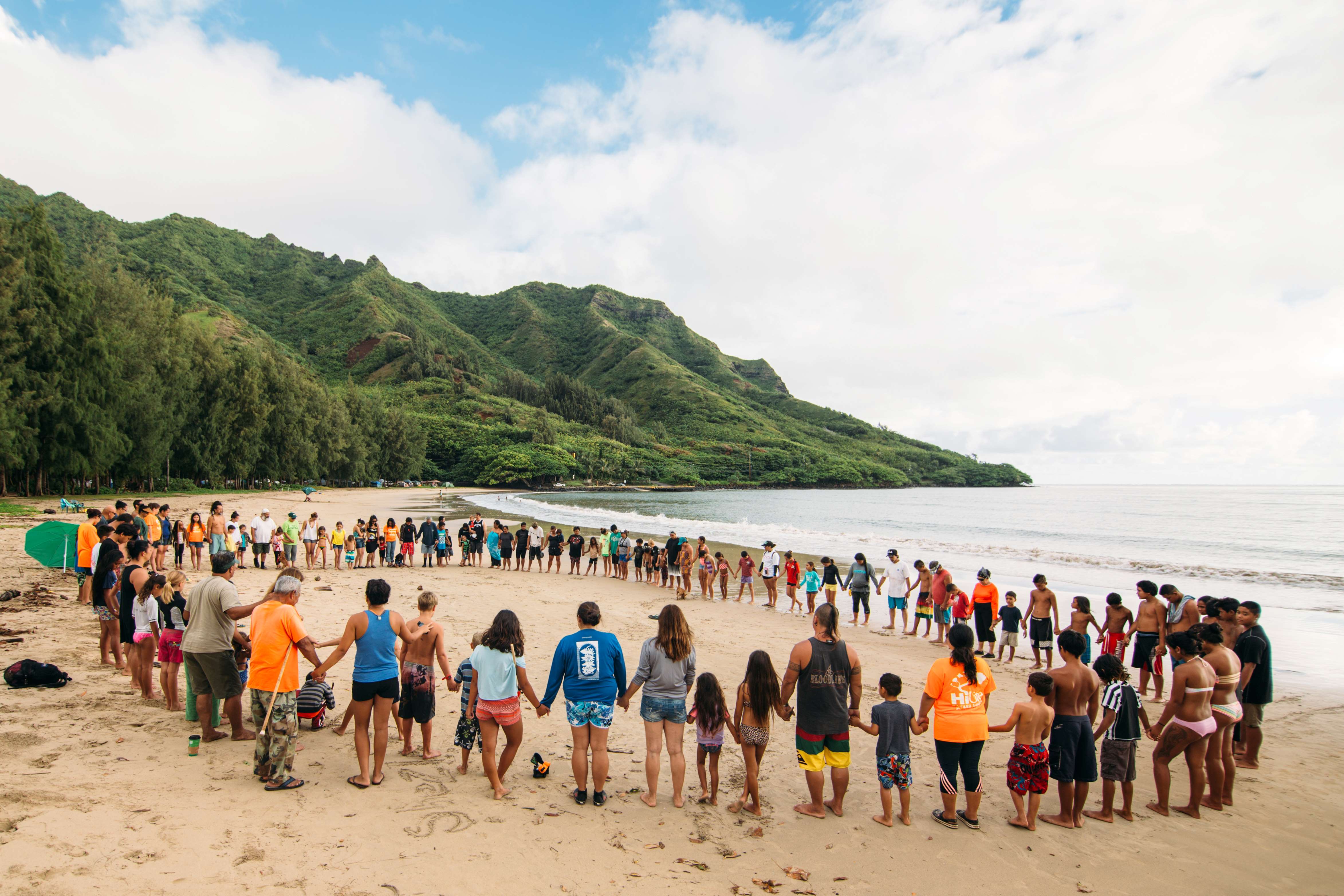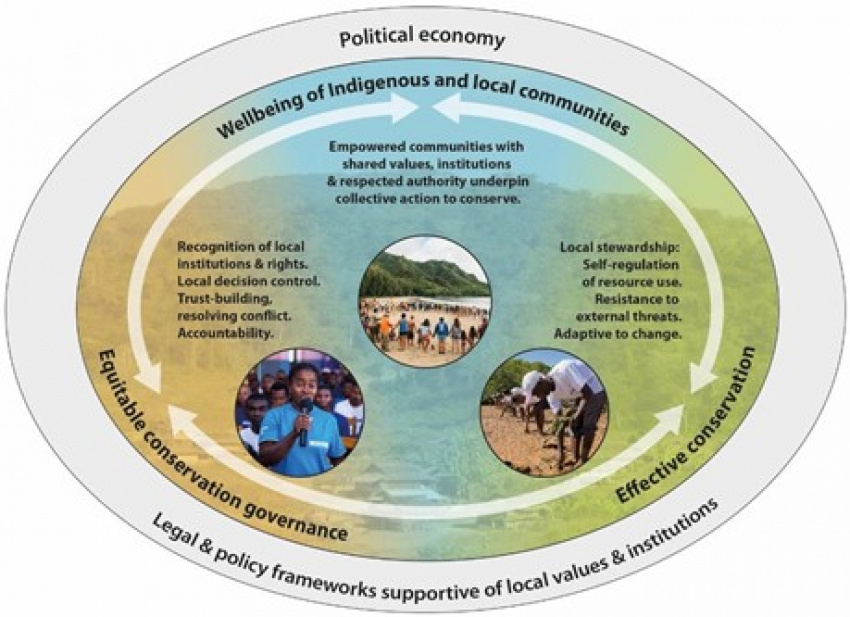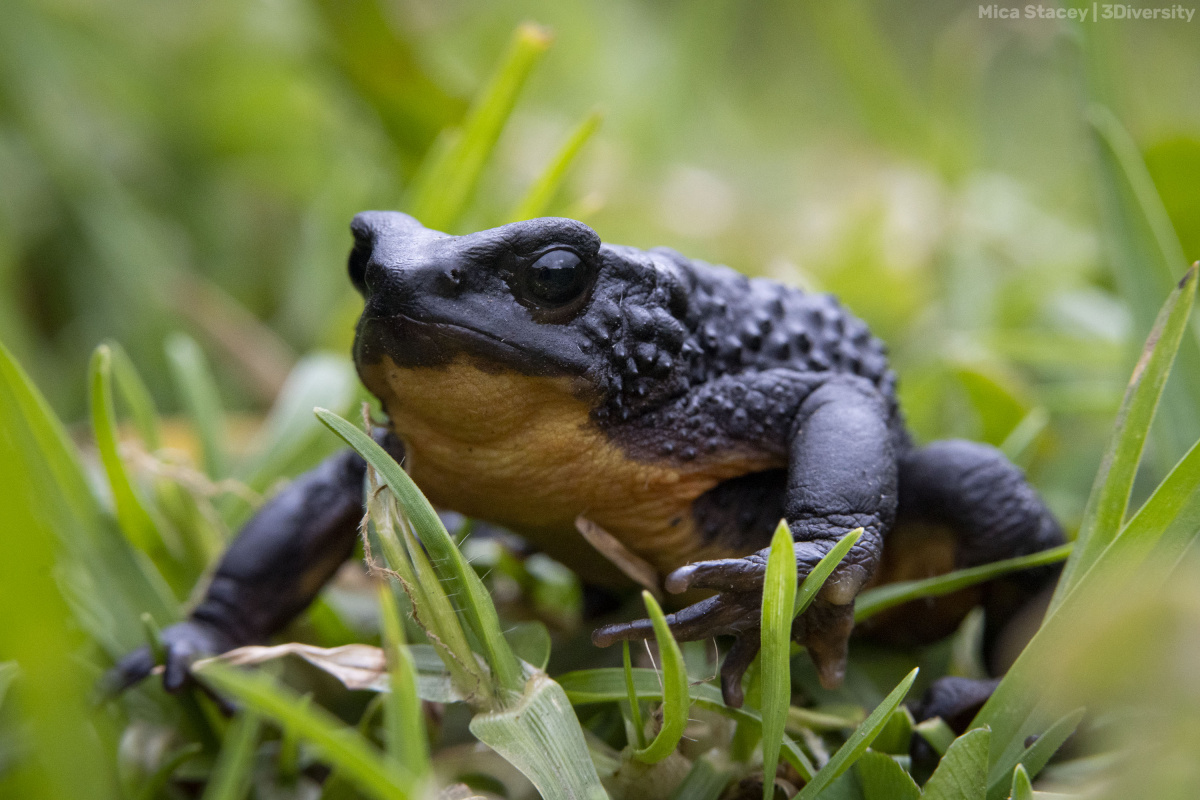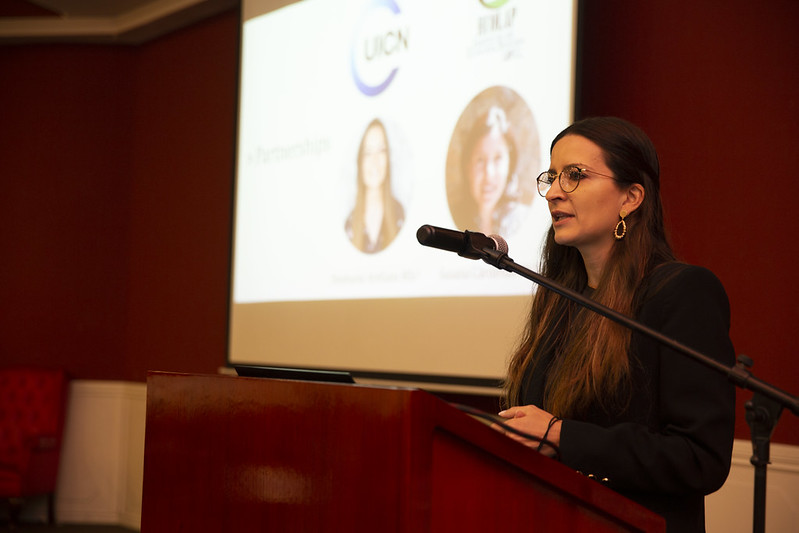Moving in the Rights direction: To successfully conserve nature requires empowered stewardship by Indigenous Peoples and local communities
CEESP News: by Neil Dawson, Chair of the CEESP Theme on Human Wellbeing and Sustainable Livelihoods
A new study led by members of CEESP's Theme on Human Wellbeing and Sustainable Livelihoods provides yet more evidence that conservation led by Indigenous Peoples and local communities, based around their own knowledge systems and stewardship, is the best strategy for people and nature.

Photo: Image by Holladay Photo:
Image by Holladay Photo: Kahana community, Koolauloa, Oahu doing a traditional Hawaiian fishing practice called Hukilau.
Debates about averting a global ecological emergency often focus on how much land and sea to protect. A huge expansion of protected areas, to 30% by 2030, has been pledged ahead of negotiations of new global biodiversity targets in October 2020. But focusing on what or how much to conserve detracts from potentially more important debates about how conservation is done, by whom and with what outcomes.
Despite a long history of conservation and studies about it, successful conservation has been the exception rather than the rule, and there has, until recently, been a lack of clear evidence for what works and why. However, a new article published in the journal Ecology and Society reviews evidence from the growing number of interdisciplinary studies, which apply more joined-up thinking to conservation design, process and outcomes, and the analysis provides striking insights with far-reaching implications.
Locally-controlled conservation performs best
A stark contrast exists between conservation led by Indigenous Peoples and local communities and initiatives under the control of states, NGOs and private companies. When Indigenous Peoples and local communities play a central role, for example resource access and decision-making are allocated according to local systems, positive conservation and wellbeing outcomes are far more likely compared with externally-controlled interventions that involve changing local practices. Furthermore, we found that over a third of externally-controlled interventions resulted in ineffective conservation at the same time as producing negative social outcomes. A key implication is that the most important factor in achieving positive conservation outcomes is not the level of restrictions or magnitude of material benefits provided to local communities, but rather recognising local social and cultural practices and capacity to make decisions.
Empowered local communities can provide effective environmental stewardship
Locally-controlled conservation produces better outcomes because it fosters active and collective stewardship of the environment. Such approaches can establish a shared vision for the landscape communities inhabit and mobilise people to preserve, restore and defend it while adapting to any threats or changes.
 Photo: TBD
Photo: TBD
The graphic illustration was created by Andy Wright www.madebyawdesign.com.
Our review nevertheless uncovers that local institutions are every bit as complex as the ecosystems they govern, and that a number of factors must align to realize successful stewardship. Simply granting control to local communities does not automatically guarantee conservation success. Community cohesion, shared knowledge and values, social inclusion, effective leadership and legitimate authority are important ingredients that are often disrupted through processes of globalisation, modernisation or insecurity, and can take many years to reestablish. Additionally, factors beyond the local community can greatly impede local stewardship, such as laws and policies that discriminate against local customs and systems in favour of commercial activities.
Our study reveals that efforts to implement externally-derived conservation regulations tend to fall short of their aims because enforcing and properly mitigating local exclusion requires resources far beyond those normally available. They often place unrealistic restrictions on people’s livelihoods and, consequently, result in forms of resistance, ranging from subtle renegotiation to more physical struggle. Where exclusive conservation is well financed it can be successful in the short-term, but the harms experienced by Indigenous Peoples and local communities are often socially unacceptable.
Market-oriented conservation initiatives using the private sector to raise finance and to provide incentives or compensation for local communities, commonly through livelihoods based on tourism or commodity production, embody one strategy for reconciling conservation and social goals. However, the evidence shows that material benefits frequently reach only a fraction of the affected communities and, with insufficient attention to local values and the inclusion of marginalised groups, this commonly results in negative social impacts, weak compliance and questionable conservation outcomes.
Effective conservation needs Indigenous Peoples and local communities
Our findings suggest that equitable conservation, which empowers and supports the environmental stewardship of Indigenous Peoples and local communities, represents the primary pathway to effective long-term conservation of biodiversity, particularly when upheld in wider law and policy. Whether for tiger reserves in India, coastal communities in Brazil, or wildflower meadows in the UK, the evidence shows that the same basis for successful conservation through stewardship holds true.
Whether the approach is described as a ‘Nature-Based Solution’, carbon or biodiversity offsetting, restoration, rewilding, payments for ecosystem services, protected areas, private conservancies or some other form, the most important questions are not how much will be protected or how much money is available, but how it aims to conserve: whether through excluding Indigenous Peoples and local communities or through recognising their rights, roles in decision making, and potential stewardship. Approaches that affirm local rights are most likely to be successful in the long-term, while continuing those exclusive approaches that have performed poorly for people and nature are no longer justifiable.
The policy message - put in motion a transition towards more equitable and effective conservation
Current policy negotiations, especially the forthcoming UN climate and biodiversity summits, must embrace and be accountable for ensuring the central role of Indigenous Peoples and local communities in mainstream climate and conservation programs. Otherwise, they will likely set in stone another decade of well-meaning practices that result in both ecological decline and social harms. Supporting local communities’ rights of access to influence decisions that profoundly affect their lives and cultures and to act as stewards of the environment should not be viewed as a radical approach. On the contrary, our study communicates an optimistic message for people and the planet: Conservation can become more effective through an increased focus on governance quality, and on fostering solutions that reinforce the roles, capacities and rights of Indigenous Peoples and local communities.
The solutions are available but the necessary transition in mainstream conservation efforts towards recognising and supporting local institutions will require humility and a significant reorientation among the conservation organisations, funders, and governments who currently exercise control over global conservation efforts. If successful, this is capable of ushering in a new era of collaboration with, support for, and stewardship by Indigenous Peoples and local communities that enhances prospects for both environmental conservation and human wellbeing.
This work was supported by the International Union for the Conservation of Nature Commission on Environmental, Economic and Social Policy (IUCN CEESP) and through the ‘Just Conservation’ project funded by the Centre for the Synthesis and Analysis of Biodiversity (CESAB) of the French Foundation for Research on Biodiversity (FRB), www.fondationbiodiversite.fr
The graphic illustration was created by Andy Wright www.madebyawdesign.com. For permission to use images, we thank: the MIHARI Network http://mihari-network.org (fisherwoman speaking and Mangrove reforestation at Belo-sur-Mer, southwestern Madagascar), and Holladay Photo (Kahana community, Koolauloa, Oahu doing a traditional Hawaiian fishing practice called Hukilau).



